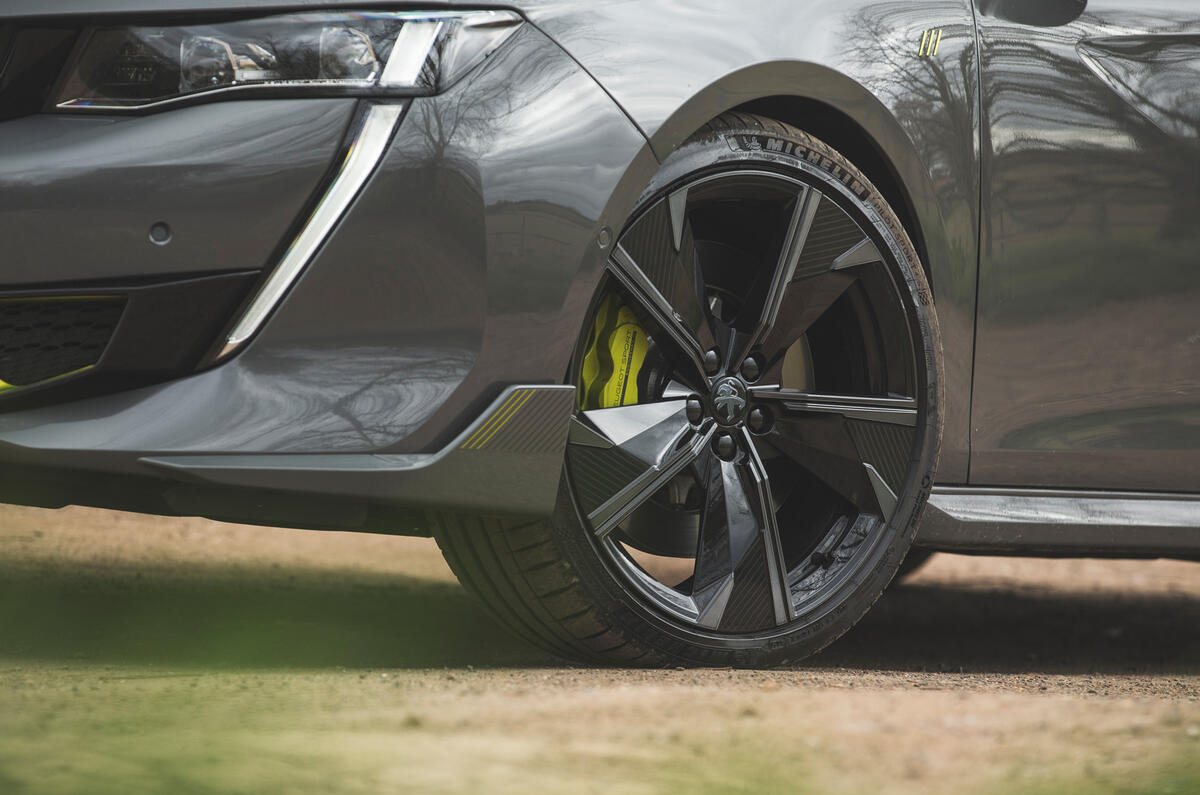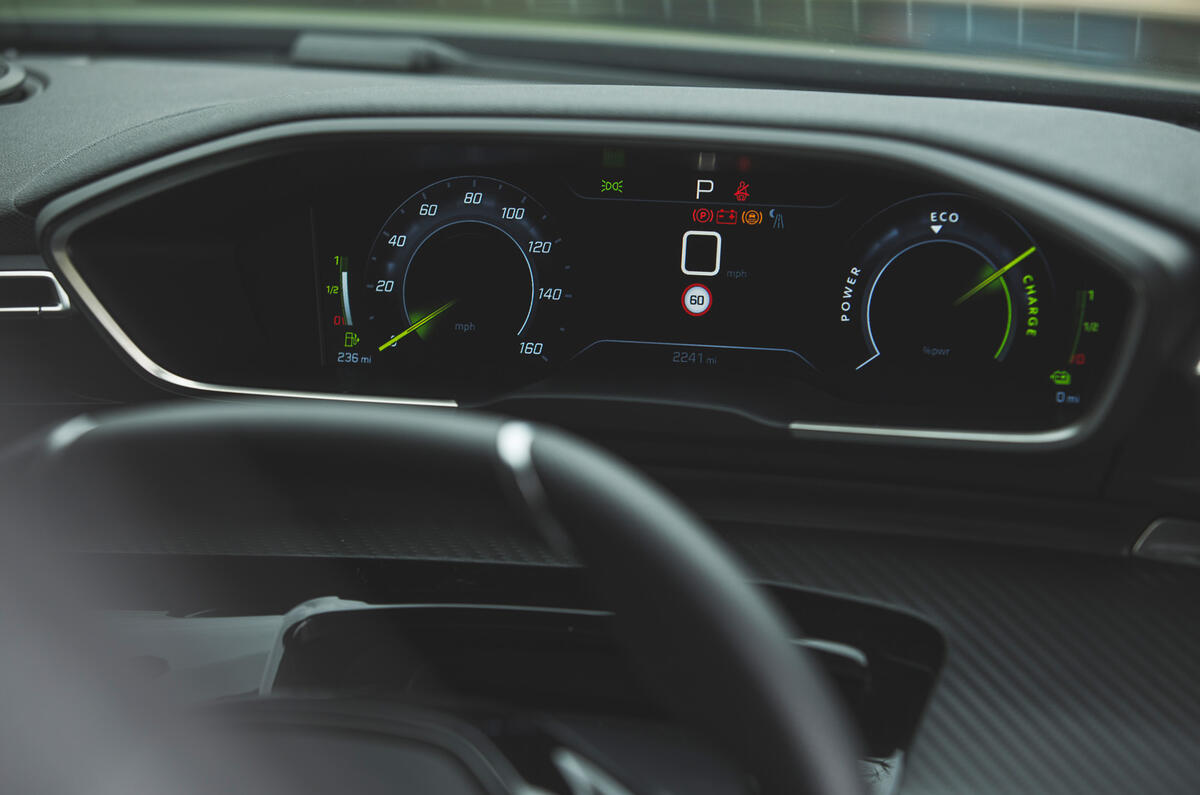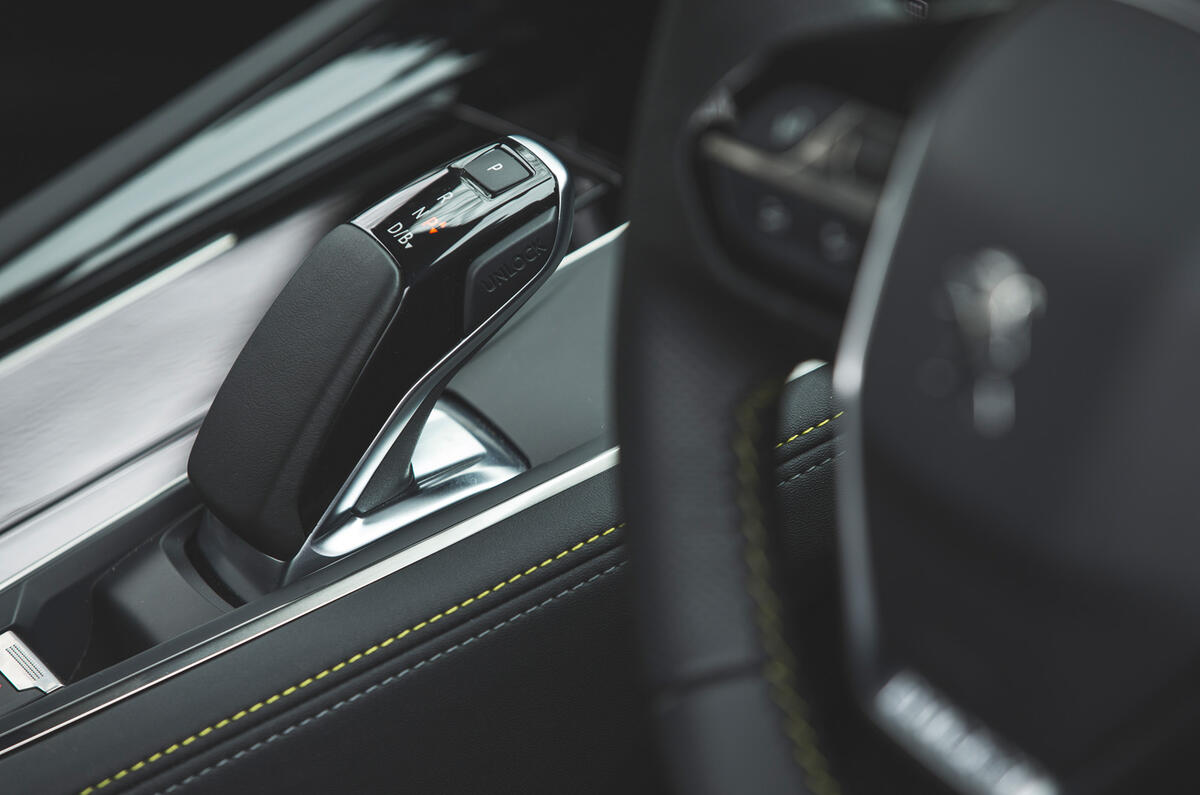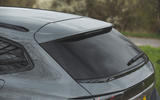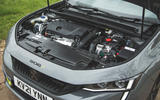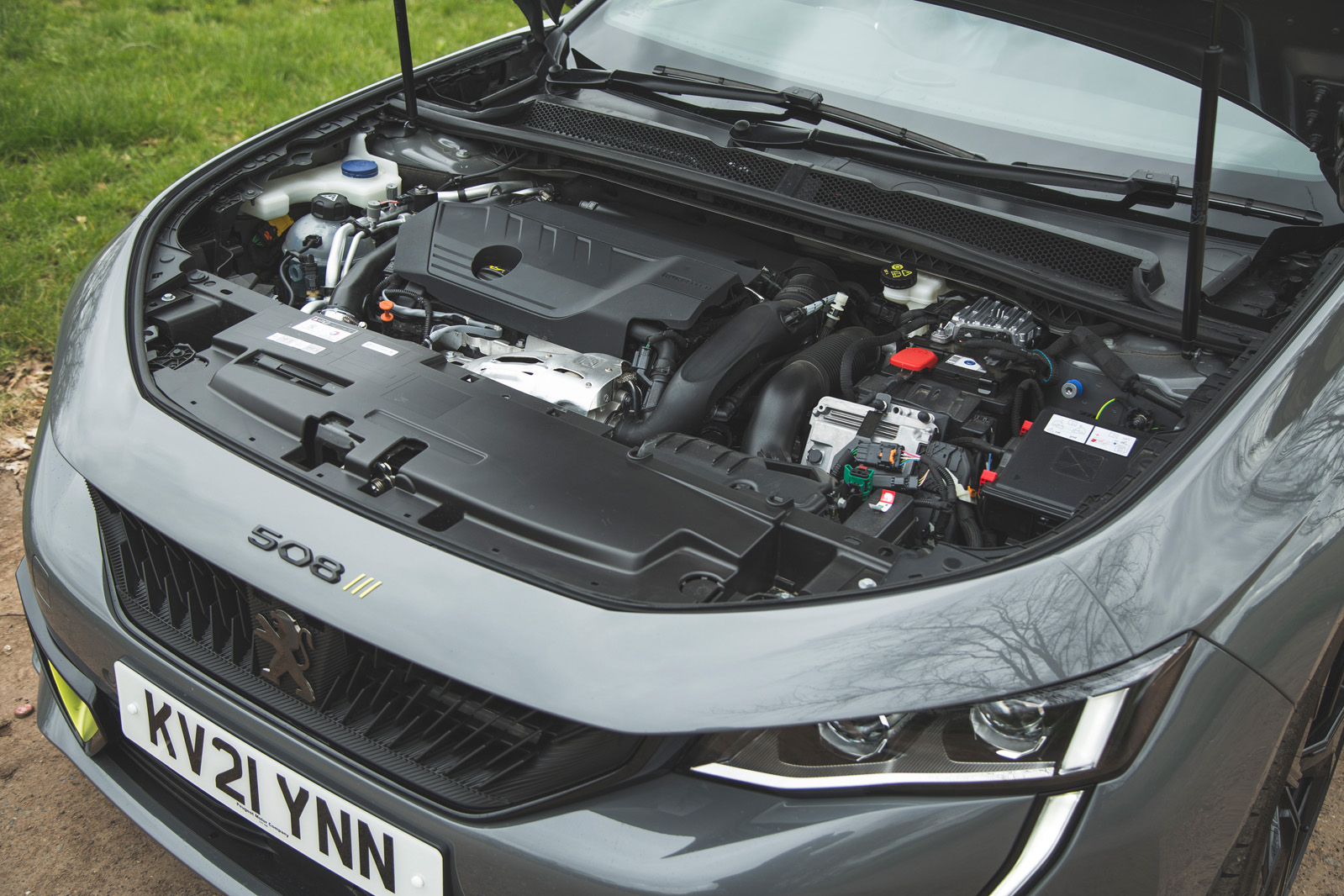The cockpit of the regular Peugeot 508 feels somewhat tight compared with many a mid-sized saloon, but in the PSE version, that feeling of closeness merely heightens the sense that you’re driving something serious and performance focused.
Bespoke touches for the PSE extend only to the fluoro yellow ‘Kryptonite’ of the stitching, dials and insignia on the flat-bottomed steering wheel, plus some faux carbonfibre finish for the heavily contoured dashboard, but it’s the high transmission tunnel and comparatively low roof that give the cabin and the driving environment some intent.
The specification is also high, with Peugeot’s Focal hi-fi system, wireless smartphone charging and the Connected 30 Navigation system all included as standard. The seats even offer a massage function, although in their shape and construction, they are no different from the ‘comfort-fit’ model found elsewhere in the range, the only difference being that they are trimmed in a mix of nappa leather, Alcantara and a new 3D mesh.
However, they are comfortable and reasonably supportive and can be set reassuringly low, as befits the 508 PSE’s GT-style role. Perceived quality is also high, if not quite at the level of the BMW M340i xDrive, and neither does the place possess quite the same flair you’ll find in the Mercedes-AMG C43.
This being a modern Peugeot, there is also the i-Cockpit to contend with. The theory is that by shrinking the steering wheel and allowing the high-placed digital instrument binnacle to be observed over the top of the rim, you simplify the cockpit and make it more intuitive. However, at least one tester found that when the seat was set low – precisely how you might set it for a performance car – the rim obscured the dials. This, along with limited rear leg room, is the 508 PSE’s chief ergonomic foible.
As for raw carrying capacity, the 508 PSE’s drive battery sits beneath the rear seats, so doesn’t hinder the 530 litres of boot space of the regular car, rising to 1780 litres with the seatbacks folded. Those are healthy figures indeed, and only just shy of what you find in full-sized estates, such as the Mercedes E-Class.
Peugeot 508 PSE infotainment and sat-nav
The 508 pairs Peugeot’s top-specification 12.3in touchscreen with the i-Cockpit’s 10.0in driver display. Both screens possess adequately sharp graphics and the latter allows you to customise the nature of the readout: ‘Minimum’ even removes the fuel gauge.
Navigating the instrument binnacle via the steering wheel buttons isn’t particularly intuitive, though, and some drivers will experience limited visibility because of the way that Peugeot positions the car’s shrunken steering wheel.
The central display contains most of the climate control functions (some, such as the heated seat buttons, are haptic, and sit just below) and multimedia features, but it also usefully illustrates the energy flows of the engine and motors in the PSE’s various driving modes. In fact, the entire ‘skin’ of the PSE’s digital array has been customised with the sub-brand’s hallmark yellow-green tone.







